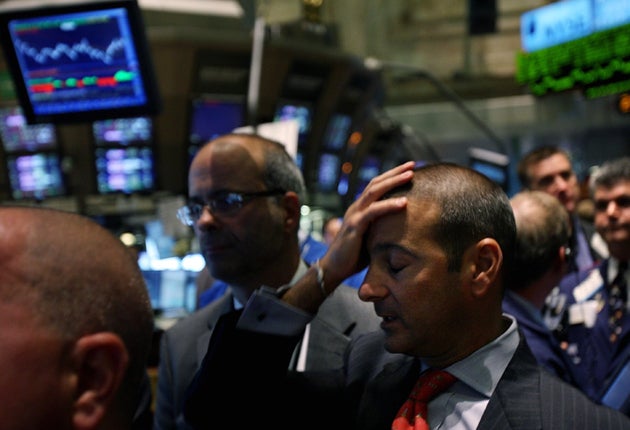How Markets Fail, By John Cassidy
When the invisible hand almost strangled us all

The crisis which engulfed the global financial system over the past two years was not just a function of greed on Wall Street (or in Scotland), stupidity, poor regulation or even property bubbles which got out of control.
It was, argues John Cassidy in a compelling analysis of the build-up to the crash and the events which followed, far more significant. It was a failure of the ideology of the free market: the belief that markets, left to themselves, will self-correct without the need for government intervention or regulatory control.
It meant the end of the road for the credibility of a whole philosophy and culture, which effectively means Thatcherism, Reaganomics, monetarism and the theory of free markets which has driven the advance of capitalism since Adam Smith published The Wealth of Nations in 1776. The logic of the economic system, embraced almost fanatically by Alan Greenspan, the longest serving chairman of the US Federal Reserve, was tested to its extreme - and it broke.
Cassidy is a former British financial journalist (and a particularly brilliant one, as I can testify from having worked with him) who has made a name for himself in the US. He has a widely admired book, Dot.con, already to his credit. In the course of his day job, he has interviewed many participants in the crash, including Greenspan, who is his chief culprit. He writes more as the economic historian which he is at heart than as the journalist he is in practice, with a cool and authoritative perception of the key elements which caused the huge boom and the even bigger bust of the past decade. His introduces the book with the extraordinary moment when Greeenspan admitted to a Congressional committee that he was wrong. "I made a mistake in presuming that the self-interests of organisations, specifically banks and others, were such that they were best capable of protecting their own shareholders and their equity in the firms."
In other words, Adam Smith's "invisible hand", which obsessed the most powerful man in the financial universe, had failed, and the markets had failed with it. "I was shocked," Greenspan admitted on Capitol Hill. "Because I had been going for 40 years or more, with very considerable evidence, that it was working exceptionally well." Under Greenspan, unfettered markets created a bubble the Fed encouraged, which would have brought the financial system crashing down but for the intrusion of pure socialism – government intervention, nationalisation of the banks in the UK, and massive bail-outs.
It was, in short, a systemic failure. When the crash came, the free market had no answers, no self-correcting mechanisms, and no solutions. Property prices, the catalyst rather than the cause of the disaster, had long got out of hand, and when they fell, they took the whole system down.
No one had foreseen it, and none of the clever people running the Fed, the US Treasury or the banks themselves understood the complex instruments, based on sub-prime mortgages, with which the banks had loaded their balance sheets. Traditionally risk-averse banks, chasing ever bigger returns, had geared their slender capital bases to absurd levels and actively joined in the sub-prime mortgage chase.
Everybody was making money, literally hundreds of millions: Richard S Fuld, CEO of Lehman Brothers, earned more than $40m in 2006 and owned shares worth $930m; Lloyd Blankfein, CEO of Goldman Sachs, was paid $54.72m; Stan O'Neal of Merrill Lynch, heralded as the first African American to head a major Wall Street bank, earned $48m – and so on. All lost their jobs – and fortunes - spectacularly when the crash came. And some of the biggest names in banking are no more.
Have the lessons been learned? The Friedmanite economists are already brushing it off as just another recession which the financial markets correctly anticipated, and point to the fact that the US economy is growing again. The Obama administration has shied away from wholesale regulatory reform, which wouldn't get through Congress in any case. And big fat bonuses are being paid again. So not much has changed. Yes, it could happen again, not next year or the year after. But ten years from now? The seeds of another crash are all there. This time, even governments might not stop it.
Join our commenting forum
Join thought-provoking conversations, follow other Independent readers and see their replies
0Comments